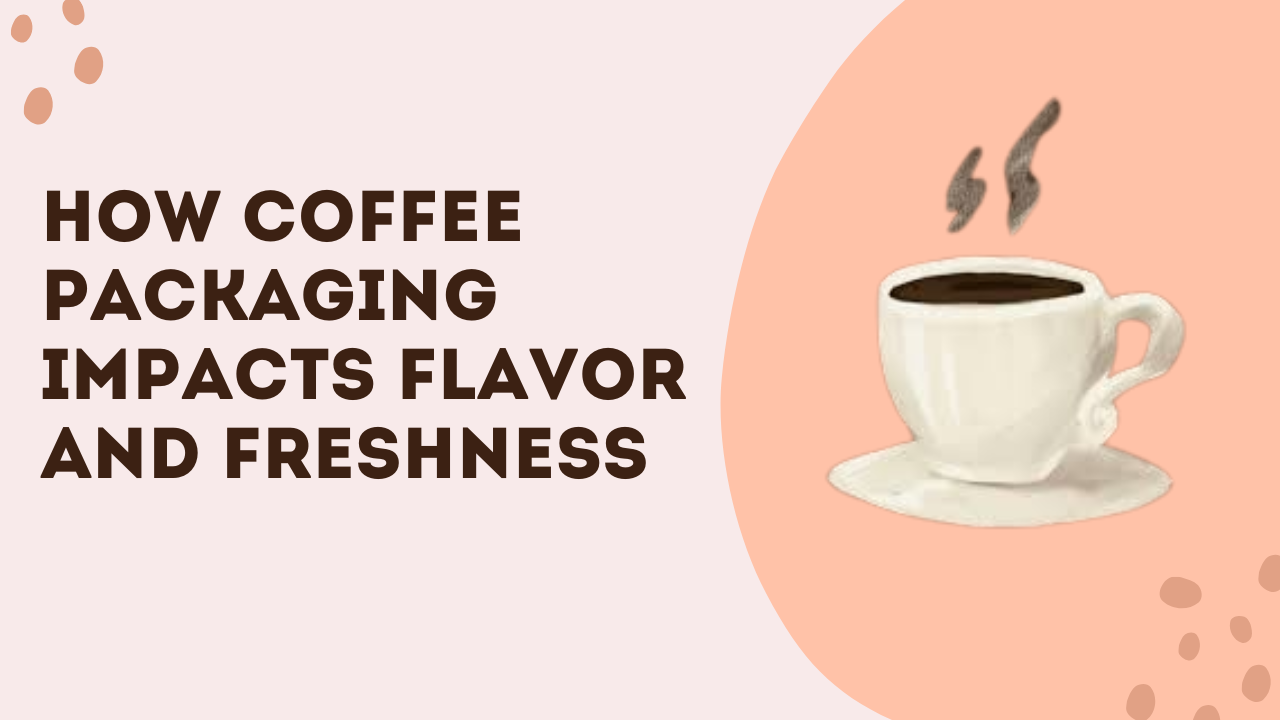Okay, let’s talk coffee. You ever opened a bag of beans and got hit with that rich, delicious aroma, only to brew a cup and it tastes… meh? Yeah, we’ve all been there. So what gives? Well, turns out, how coffee packaging impacts flavor and freshness is actually a huge deal. Like, more than most people think. It’s not just about a pretty bag on the shelf—it’s science meets flavor preservation. The way coffee is stored, sealed, and even the materials used can totally make or break the final taste in your cup. So whether you’re a full-on coffee snob (hey, no shame) or just someone who wants your brew to not taste like cardboard, you’re gonna wanna know how packaging plays its part. Let’s dig into it, yeah?
1. Freshness Starts the Moment Coffee Is Roasted
So here’s the thing: once coffee is roasted, it starts to release carbon dioxide (a process called degassing—sounds intense, huh?). This is a natural part of the process, but it also means that roasted coffee starts losing its freshness fast. We’re talking days. That’s why the packaging needs to step in and be like, “Nope, not today, oxygen!”
If the bag isn’t doing its job, the beans get exposed to air, light, and moisture—all of which can dull the flavor faster than you can say “double shot espresso.” Basically, without proper packaging, your fancy roast might taste stale before you even get to your second cup.
2. Why Oxygen Is the Enemy (And Vacuum Seals Are the Hero)
Oxygen is great for breathing and all, but for coffee? Not so much. Oxygen is like the arch-nemesis of freshness. When coffee beans come in contact with air, they oxidize. And oxidized coffee = flat, boring flavor.
This is where vacuum-sealed packaging or nitrogen-flushed bags come in. These methods push out the oxygen and seal in the flavor. Some packaging even includes one-way valves (those little round things on the bag) that let carbon dioxide escape without letting oxygen in. Genius, right? It’s like giving your beans a mini airlock from a spaceship—but for flavor.
3. Material Matters More Than You Think
Let’s be honest—some coffee bags look fancy but are basically just dressed-up plastic. Don’t be fooled. The actual materials used in packaging make a big difference. Here’s the lowdown:
- Foil-lined bags: These are great for keeping out light and air. They’re kind of the gold standard.
- Paper bags: Usually a no-go unless they’ve got some inner lining. Otherwise, moisture and air sneak right in.
- Compostable bags: Eco-friendly? Yes. Long-lasting freshness? Ehh… depends on the tech behind them.
So, if you’re buying coffee, especially whole beans, pay attention to the bag. It’s not just what’s inside that counts!
4. Don’t Forget Light and Heat—They’re Sneaky Flavor Killers
It’s not just oxygen we need to worry about. Light and heat are two more flavor-destroying culprits. If your coffee bag is transparent or thin, it might let in light that speeds up the aging process. And heat? Forget about it. Leaving your beans near the stove or a sunny window is basically asking them to go stale.
That’s why opaque, well-insulated packaging is a game-changer. Dark, cool storage + proper packaging = beans that keep their punchy flavor way longer.
5. Whole Beans vs. Ground Coffee: The Packaging Priority Shift
Okay, real talk: ground coffee goes stale way faster than whole beans. That’s because grinding increases the surface area, making it way easier for oxygen to do its dirty work. So if you buy pre-ground coffee, the packaging needs to be on point—like, Fort Knox level.
This is where airtight containers or single-serve pods come into play. They’re not just marketing gimmicks. For ground coffee especially, the packaging can literally be the difference between a rich, balanced cup and one that tastes like it’s been sitting out for days (because it kinda has, if it’s poorly packed).
6. The Shelf Life Myth (aka “Best By” Isn’t Always Best)
Let’s bust a myth while we’re at it. You see those “best by” dates on coffee bags? Yeah… they’re more of a guideline than a hard rule. Coffee doesn’t go bad in the way milk does, but it definitely loses its magic over time.
The real freshness window depends more on the roast date and the packaging. If you’re buying beans that were roasted months ago—even if the best-by date is in the future—chances are, the flavor’s already taken a hit. Look for roast dates and packaging that actually preserves the good stuff.
7. So, What Should You Look for When Buying Coffee?
Alright, let’s get practical. If you want your morning cup to actually taste like something special, here’s what to keep an eye on:
- Roast date: The fresher, the better. Always.
- One-way valve: Lets gas out, keeps air from getting in.
- Vacuum-sealed or nitrogen flushed: Total freshness win.
- Opaque packaging: Keeps light from messing with the flavor.
- Tightly sealed resealable zip: Helps keep things fresh after opening.
And if you really wanna go pro? Transfer your beans to an airtight container at home and keep ‘em in a cool, dark place.
Final Sip: It’s More Than Just a Pretty Bag
At the end of the day, how coffee packaging impacts flavor and freshness is something every coffee lover should care about—even if you’re not a full-blown barista. Great coffee doesn’t just come from great beans. It comes from treating those beans right, all the way from roast to cup.
So next time you’re picking out a bag, take a second to check the packaging. Your taste buds will totally thank you later.
